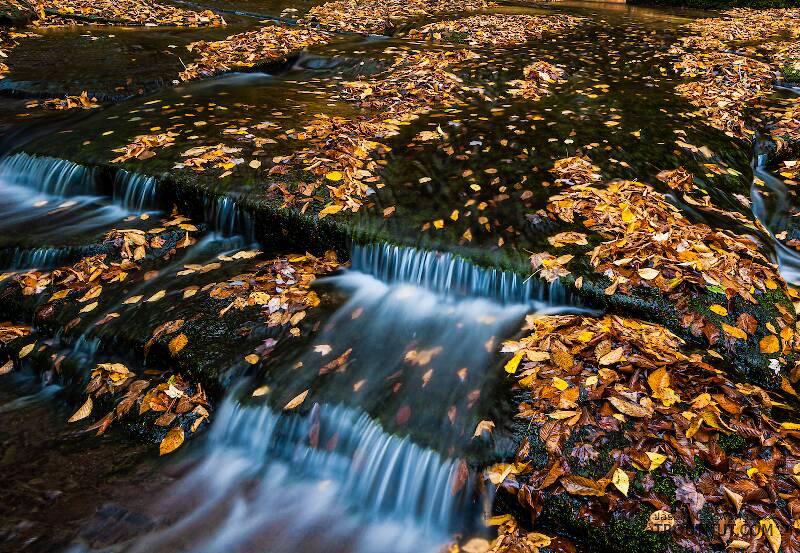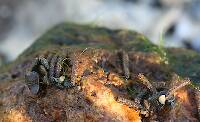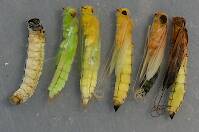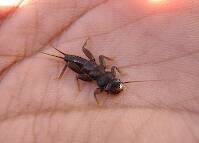
Hex Mayflies
Hexagenia limbata
The famous nocturnal Hex hatch of the Midwest (and a few other lucky locations) stirs to the surface mythically large brown trout that only touch streamers for the rest of the year.
Featured on the forum

Some characteristics from the microscope images for the tentative species id: The postero-lateral projections are found only on segment 9, not segment 8. Based on the key in Jacobus et al. (2014), it appears to key to Neoleptophlebia adoptiva or Neoleptophlebia heteronea, same as this specimen with pretty different abdominal markings. However, distinguishing between those calls for comparing the lengths of the second and third segment of the labial palp, and this one (like the other one) only seems to have two segments. So I'm stuck on them both. It's likely that the fact that they're immature nymphs stymies identification in some important way.

Troutnut is a project started in 2003 by salmonid ecologist Jason "Troutnut" Neuswanger to help anglers and
fly tyers unabashedly embrace the entomological side of the sport. Learn more about Troutnut or
support the project for an enhanced experience here.
Xavier_Carp has attached this picture to aid in identification. The message is below.
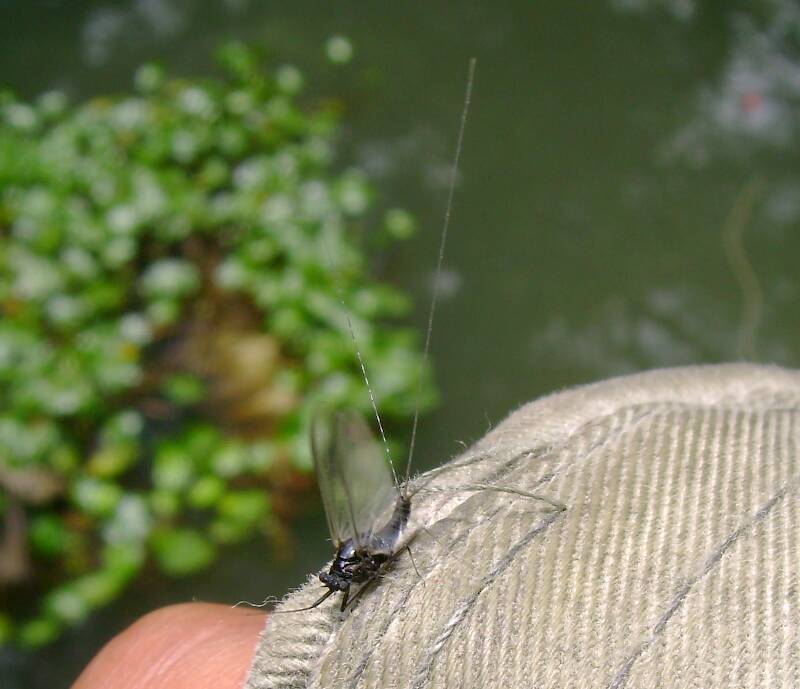
Xavier_Carp
Posts: 13
Posts: 13
Xavier_Carp on Aug 7, 2007August 7th, 2007, 11:25 am EDT
Hi, I know it is a mayfly, but don't know the species, hope you can help me out, it was photographed down here in Mexico.
Konchu on Aug 7, 2007August 7th, 2007, 1:54 pm EDT
Looks similar to the genus Tricorythodes (what people call Tricos) or some other member of the family Leptohyphidae. The dark color, three tails and shape & coloration of wings all help me to guess that it is Tricorythodes.
How big was it? What part of Mexico were you in when you saw it?
How big was it? What part of Mexico were you in when you saw it?
Xavier_Carp
Posts: 13
Posts: 13
Xavier_Carp on Aug 8, 2007August 8th, 2007, 3:25 am EDT
It is small maybe 1.4 cm I saw it in the central part of mexico, the place is about 2000 mt above the sea level, it was a beautiful shinny black color
Konchu on Aug 8, 2007August 8th, 2007, 4:55 pm EDT
Several Tricorythodes species are known from central Mexico.
http://www.entm.purdue.edu/entomology/research/mayfly/species.html
Did you see the river or stream nearby? If so, please describe it. This might help.
http://www.entm.purdue.edu/entomology/research/mayfly/species.html
Did you see the river or stream nearby? If so, please describe it. This might help.
Xavier_Carp
Posts: 13
Posts: 13
Xavier_Carp on Aug 9, 2007August 9th, 2007, 9:41 am EDT
Konchu, I was fishing on this small creek, the area where I caught it is where the water is most still avobe a small dam, the creek is only 6ft wide and not very deep, the deepest pools are about 4ft and average depth is 2ft bottom is mostly grtavel with some areas covered with a thin layer of silt, hope this help
Konchu on Aug 9, 2007August 9th, 2007, 10:30 am EDT
Good leptohyphid habitat.
Taxon on Aug 9, 2007August 9th, 2007, 11:55 am EDT
Xavier_Carp-
When you say Central Mexico, are you referring to the country or the state of México? This information would allow me to significantly narrow down the identification possibilities.
Here is a list of the Mexican states:
When you say Central Mexico, are you referring to the country or the state of México? This information would allow me to significantly narrow down the identification possibilities.
Here is a list of the Mexican states:
- SW Southwest Region
- BN Baja California
- BS Baja California Sur
- CA Coahuila
- CH Chihuahua
- DU Durango (all but southern tip)
- NL Nuevo León
- SI Sinaloa (all but southern third)
- SL San Luis Potosí (northern tip)
- SO Sonora
- TM Tamaulipas (all but southern third)
- ZA Zacatecas (all but southern tip)
- FS Far South Region
- AG Aguascalientes
- CL Colima
- CM Campeche
- CP Chiapas
- DF Distrito Federal
- DU Durango (southern tip)
- GJ Guanajuato
- GR Guerrero
- HI Hidalgo
- JA Jalisco
- MC Michoacán
- MR Morelos
- MX México
- NA Nayarit
- OA Oaxaca
- PU Puebla
- QE Querétaro
- QR Quintana Roo
- SI Sinaloa (southern third)
- SL San Luis Potosí (all but northern tip)
- TB Tabasco
- TL Tlaxcala
- TM Tamaulipas (southern third)
- VE Veracruz
- YU Yucatán
- ZA Zacatecas (southern tip)
Xavier_Carp
Posts: 13
Posts: 13
Xavier_Carp on Aug 9, 2007August 9th, 2007, 12:46 pm EDT
Taxon, it was pictured in Puebla
THX
THX
Taxon on Aug 9, 2007August 9th, 2007, 1:55 pm EDT
Hmmmm. Puebla, doesn’t seem have any leptohyphids recorded, at least according to a list compiled from Dr. Pat Randolph’s PhD dissertation. So, I looked at the surrounding states, and found that Oaxaca, immediately south of Puebla, has records of the following leptohyphids:
It is likely one of these. Perhaps Konchu will be able to narrow it further.
- Leptohyphes alleni
Leptohyphes brunneus
Leptohyphes castaneus
Leptohyphes zalope
Tricorythodes notatus
Vacupernius packeri
It is likely one of these. Perhaps Konchu will be able to narrow it further.
Konchu on Aug 10, 2007August 10th, 2007, 5:01 am EDT
The tails on this beast are too long for Tricorythodes...
Quick Reply
Related Discussions
Topic
Replies
Last Reply
Re: Help to get some specimens of the isopod Caecidotea communis
In the Arthropod Family Asellidae by Leonardo
In the Arthropod Family Asellidae by Leonardo
11
Mar 29, 2013
by Leonardo
by Leonardo
Re: I need your help to get some specimens of Caecidotea (Freshwater isopods).
In General Discussion by Leonardo
In General Discussion by Leonardo
4
Jun 1, 2016
by Crepuscular
by Crepuscular
0
May 15, 2016
by Leonardo
by Leonardo
3
Oct 30, 2009
by Doublezz105
by Doublezz105
2
Jul 9, 2018
by Martinlf
by Martinlf

